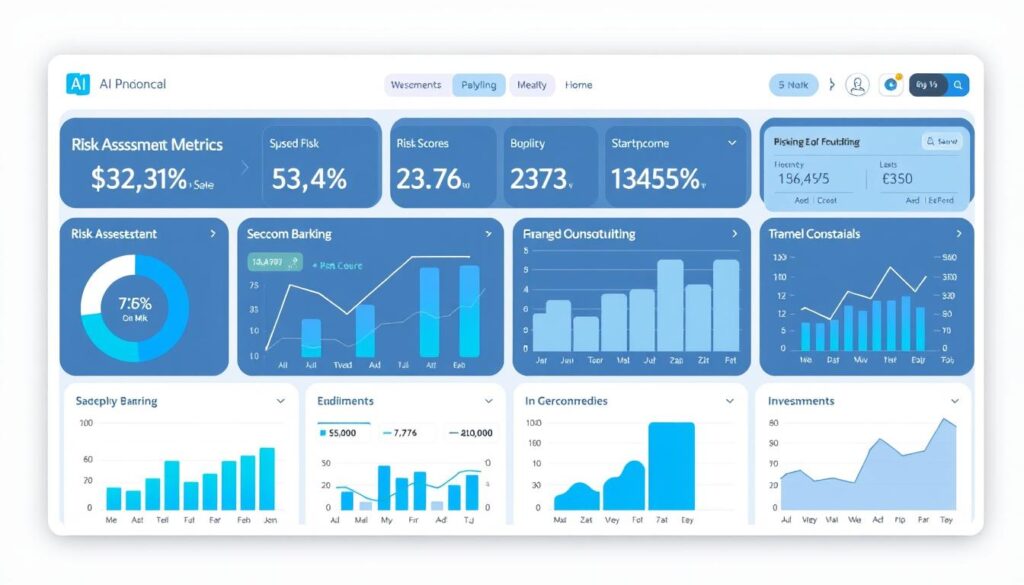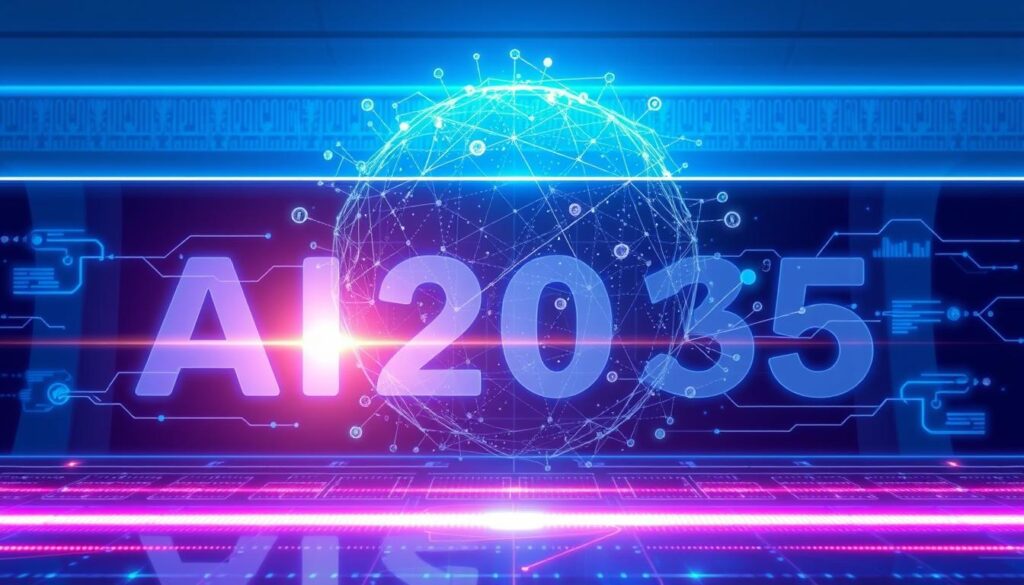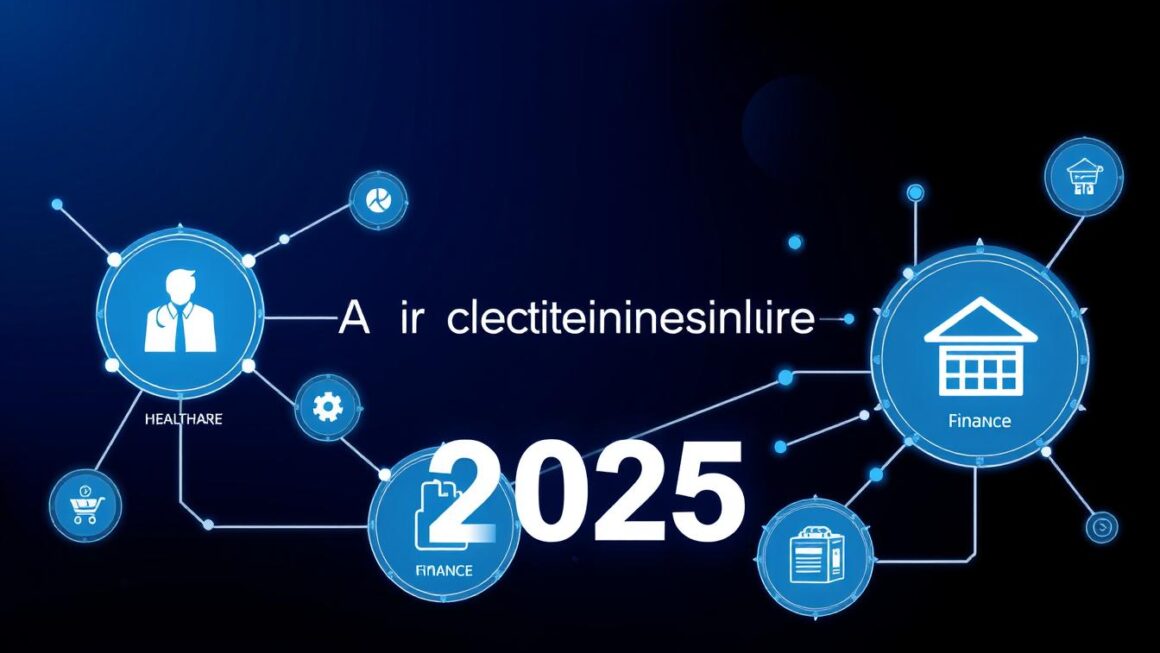Artificial intelligence is no longer just a futuristic concept—it’s actively reshaping the foundation of global industries. As we approach 2025, AI technologies are moving beyond experimental phases into mission-critical applications that drive efficiency, innovation, and competitive advantage. This transformation isn’t merely incremental; it represents a fundamental shift in how businesses operate, compete, and deliver value to customers.
From healthcare diagnostics that outperform human specialists to manufacturing systems that predict equipment failures before they occur, AI is creating unprecedented capabilities across sectors. This article explores the concrete ways AI is redefining industries in 2025, backed by real-world examples, data-driven projections, and insights into both the challenges and opportunities that lie ahead.
The AI Transformation Landscape in 2025
In 2025, AI has evolved from specialized applications to comprehensive systems that reason, learn, and adapt across business functions. According to McKinsey’s latest projections, AI technologies are set to add $13 trillion to global economic output by 2030, with early adopters already seeing 3-15% profit margin advantages over industry averages.
The most significant shift has been toward what industry experts call “reasoning AI” – systems that can break down complex problems into manageable steps, try multiple approaches when faced with obstacles, and explain their decision-making processes. This capability is transforming everything from customer service to strategic planning.
Five key trends are defining this transformation:
- AI reasoning capabilities that enable more sophisticated decision support
- Custom silicon and specialized hardware optimized for specific AI workloads
- Cloud migrations that enable AI at enterprise scale
- Advanced systems to measure AI efficacy and ROI
- The emergence of agentic AI that can take autonomous actions
These developments aren’t just technical achievements—they’re creating tangible business value across industries by addressing long-standing challenges in productivity, innovation, and customer experience.
Healthcare: AI-Driven Diagnostics and Personalized Medicine

The healthcare industry is experiencing one of the most profound AI-driven transformations. By 2025, AI systems are not just supplementing medical professionals—they’re actively enhancing diagnostic accuracy, treatment planning, and patient care management.
AI Applications Reshaping Healthcare in 2025
Diagnostic Precision
AI diagnostic tools now demonstrate accuracy rates exceeding 95% for certain conditions, surpassing many human specialists. Siemens Healthineers’ AI-Rad Companion, for example, can detect subtle abnormalities in medical imaging that might escape human notice, reducing diagnostic errors by up to 30%.
These systems work by analyzing millions of anonymized patient records and images, identifying patterns invisible to the human eye. The result is earlier detection of conditions like cancer, heart disease, and neurological disorders.
Treatment Optimization
AI algorithms are revolutionizing treatment planning by analyzing patient-specific data against vast medical knowledge bases. Mayo Clinic’s implementation of AI treatment recommendation systems has reduced adverse drug events by 52% while improving treatment efficacy across multiple specialties.
These systems consider individual patient factors—genetics, comorbidities, lifestyle—to recommend personalized treatment protocols with higher success rates and fewer side effects than standardized approaches.
Real-World Impact: Case Study
Cleveland Clinic’s AI Integration
Cleveland Clinic has implemented an AI system that analyzes patient data to predict which individuals are at highest risk for complications during surgery. The system evaluates over 200 variables from medical records, lab results, and real-time monitoring data to create risk profiles that help surgical teams prepare for potential issues.
Results from the first 18 months show:
- 42% reduction in unexpected ICU admissions
- 27% decrease in post-surgical complications
- $3.8 million in annual cost savings from reduced complications
- Average length of stay reduced by 1.3 days
The healthcare AI market is projected to reach $45.2 billion by 2026, growing at a CAGR of 44.9%. However, challenges remain in data privacy, regulatory approval processes, and integration with existing healthcare systems.
Manufacturing: Predictive Maintenance and Intelligent Automation

Manufacturing has embraced AI technologies to create what industry experts call “cognitive factories”—production environments where machines and systems can predict, learn, and optimize operations with minimal human intervention.
Transformative AI Applications in Manufacturing
Predictive Maintenance
AI-driven predictive maintenance systems have evolved from simple anomaly detection to sophisticated platforms that can forecast equipment failures weeks in advance with over 90% accuracy. These systems analyze data from IoT sensors, historical maintenance records, and even acoustic signatures to identify potential issues before they cause downtime.
Siemens’ implementation of AI predictive maintenance across its global manufacturing facilities has reduced unplanned downtime by 78% and extended machine lifespans by up to 25%.
Quality Control Automation
Computer vision systems powered by deep learning algorithms can inspect products at speeds and accuracy levels impossible for human workers. These systems can detect microscopic defects across multiple dimensions simultaneously, ensuring consistent quality.
BMW’s implementation of AI quality control systems across its production lines has reduced defect rates by 61% while increasing inspection speed by a factor of 8, demonstrating the dual benefits of improved quality and efficiency.
Comparative Analysis: AI Adoption in Manufacturing
| Manufacturing Sector | AI Adoption Rate (2023) | Projected Adoption (2025) | Primary Applications | Average ROI Timeframe |
| Automotive | 68% | 92% | Quality control, predictive maintenance | 14 months |
| Electronics | 72% | 95% | Defect detection, supply chain optimization | 11 months |
| Pharmaceuticals | 54% | 87% | Process optimization, compliance monitoring | 18 months |
| Heavy Industry | 42% | 76% | Equipment monitoring, energy optimization | 22 months |
According to Gartner, manufacturers implementing AI-driven systems are seeing an average productivity increase of 22% and cost reductions of 17-20%. The most successful implementations are those that focus on specific, high-value use cases rather than attempting wholesale transformation.
Finance: AI-Powered Risk Assessment and Personalized Banking

The financial services industry has moved beyond basic automation to implement sophisticated AI systems that transform risk assessment, fraud detection, and customer experience. By 2025, AI has become central to how financial institutions make decisions and serve clients.
Key AI Applications in Financial Services
Advanced Risk Assessment
AI-powered risk assessment models now analyze thousands of variables—from traditional credit data to alternative signals like spending patterns and even social media behavior—to create more accurate risk profiles. These systems can identify creditworthy customers who might be overlooked by traditional models while also flagging hidden risks in seemingly stable portfolios.
JP Morgan Chase’s implementation of AI risk models has improved lending decision accuracy by 37% while reducing default rates by 29% across consumer lending products.
Fraud Detection and Prevention
AI systems now detect fraudulent transactions with over 99% accuracy by analyzing patterns across billions of transactions in real-time. These systems can identify sophisticated fraud schemes that would be impossible for human analysts to detect.
Mastercard’s AI fraud detection platform analyzes over 75 billion transactions annually and has reduced false positives by 60% while improving fraud detection rates by 35%, saving an estimated $12 billion in potential fraud losses.
Challenges and Opportunities
Opportunities
- Hyper-personalized financial products based on individual behavior
- Democratized access to sophisticated financial advice through AI advisors
- Reduced operational costs through intelligent process automation
- Enhanced regulatory compliance through AI monitoring systems
Challenges
- Algorithmic bias in lending and investment decisions
- Data privacy concerns and regulatory constraints
- Integration with legacy banking infrastructure
- Customer trust in AI-driven financial recommendations
According to Deloitte’s Banking and Capital Markets Outlook, financial institutions that have successfully implemented AI systems are seeing cost-income ratio improvements of 12-15% and customer satisfaction increases of up to 25%.
Retail: Personalized Shopping Experiences and Supply Chain Intelligence

The retail industry has undergone a profound transformation through AI implementation, creating seamless omnichannel experiences and intelligent supply chains that anticipate consumer needs before they arise.
AI-Driven Retail Innovations
Hyper-Personalization
AI systems now analyze thousands of customer data points—from purchase history and browsing behavior to social media activity and even in-store movements—to create highly personalized shopping experiences. These systems can predict customer needs with remarkable accuracy, sometimes before customers themselves are aware of them.
Amazon’s recommendation engine, which drives 35% of the company’s revenue, has evolved to incorporate over 100 variables in its personalization algorithms, resulting in conversion rates 60% higher than non-personalized recommendations.
Inventory and Supply Chain Optimization
AI-powered inventory management systems now predict demand patterns with up to 95% accuracy, considering factors ranging from weather forecasts to social media trends. These systems optimize stock levels, reduce waste, and ensure products are available when and where customers want them.
Walmart’s implementation of AI supply chain optimization has reduced out-of-stock items by 45% while decreasing inventory costs by 17%, demonstrating the dual benefits of improved customer satisfaction and operational efficiency.
Case Study: Sephora’s AI Transformation
Sephora’s AI Beauty Assistant
Sephora has implemented an AI-powered beauty assistant that combines computer vision, natural language processing, and personalization algorithms to create a seamless shopping experience across channels.
The system includes:
- Virtual try-on technology that allows customers to test products digitally
- Personalized product recommendations based on skin type, preferences, and past purchases
- In-store kiosks that recognize returning customers and access their digital profiles
- Predictive inventory management that ensures popular items remain in stock
Results after full implementation:
- 32% increase in average transaction value
- 47% higher conversion rate for AI-recommended products
- 28% reduction in returned items
- Customer satisfaction scores improved by 24 points
According to Gartner, retailers implementing AI-driven personalization and supply chain optimization are seeing revenue increases of 15-20% and margin improvements of 10-15% compared to competitors who have not adopted these technologies.
Implementation Challenges and Success Factors

While AI offers transformative potential across industries, successful implementation requires navigating significant challenges. Organizations that achieve the greatest ROI from AI initiatives share common approaches to overcoming these obstacles.
Key Implementation Challenges
Data Quality and Integration
AI systems require vast amounts of clean, structured data to deliver accurate results. Many organizations struggle with fragmented data sources, inconsistent formats, and poor data governance. According to Gartner, data quality issues are the primary reason 87% of AI projects fail to move from pilot to production.
Workforce Adaptation
Successful AI implementation requires not just technical expertise but also organizational change management. Employees may resist AI adoption due to fear of job displacement or lack of understanding. McKinsey reports that companies with comprehensive change management programs are 2.6 times more likely to report successful AI implementations.
Ethical and Regulatory Compliance
As AI systems make more consequential decisions, organizations face increasing scrutiny regarding bias, transparency, and privacy. Navigating the complex and evolving regulatory landscape requires proactive governance frameworks. Deloitte found that 73% of executives cite regulatory uncertainty as a top concern in AI implementation.
Success Factors for AI Implementation
Organizations that approach AI implementation with a clear business case, strong executive sponsorship, and cross-functional teams consistently achieve better results. Starting with focused use cases that deliver measurable value builds momentum and organizational buy-in for broader transformation initiatives.
Future Outlook: Beyond 2025

While 2025 represents a significant milestone in AI adoption across industries, the evolution of these technologies continues to accelerate. Looking beyond the immediate horizon reveals emerging capabilities that will further transform how businesses operate and compete.
Emerging AI Capabilities
Agentic AI Systems
The next frontier in AI development is the creation of agentic systems—AI that can autonomously plan, execute, and adapt complex sequences of actions to achieve specific goals. These systems will move beyond responding to queries or performing predefined tasks to proactively identifying opportunities and solving problems.
Early implementations in industries like logistics and customer service demonstrate the potential for agentic AI to manage entire business processes with minimal human oversight, continuously optimizing for efficiency and effectiveness.
Multimodal Understanding
Future AI systems will seamlessly integrate understanding across text, images, video, audio, and sensor data to develop comprehensive situational awareness. This multimodal capability will enable more natural human-AI interaction and more sophisticated analysis of complex environments.
In healthcare, for example, multimodal AI will analyze patient conversations, vital signs, medical images, and historical records simultaneously to provide more accurate diagnoses and treatment recommendations than systems limited to a single data type.
Long-Term Industry Impact
The long-term impact of AI on industries will extend beyond efficiency improvements and cost reductions to fundamental business model innovation. Organizations that successfully harness AI capabilities will create entirely new categories of products and services that were previously impossible.
According to the World Economic Forum, by 2030, AI is expected to contribute up to 26% of GDP in advanced economies, with the most significant gains coming from business model innovation rather than process optimization. Industries that embrace AI as a core capability rather than a supporting technology will define the next era of economic growth.
Conclusion: Embracing the AI-Driven Transformation
As we’ve explored throughout this article, AI is fundamentally redefining industries in 2025, creating new capabilities, business models, and competitive dynamics. The organizations that thrive in this environment will be those that approach AI not merely as a technology implementation but as a strategic capability that touches every aspect of their operations.
The most successful implementations share common characteristics: clear alignment with business objectives, strong data foundations, cross-functional collaboration, and an iterative approach that delivers incremental value while building toward larger transformation. As AI capabilities continue to evolve, the gap between leaders and laggards will widen, making strategic investment in these technologies increasingly critical.
Whether in healthcare, manufacturing, financial services, or retail, the message is clear: AI is no longer optional for organizations that wish to remain competitive. The question is not whether to implement AI, but how to implement it in ways that create sustainable competitive advantage while navigating the technical, organizational, and ethical challenges these powerful technologies present.



